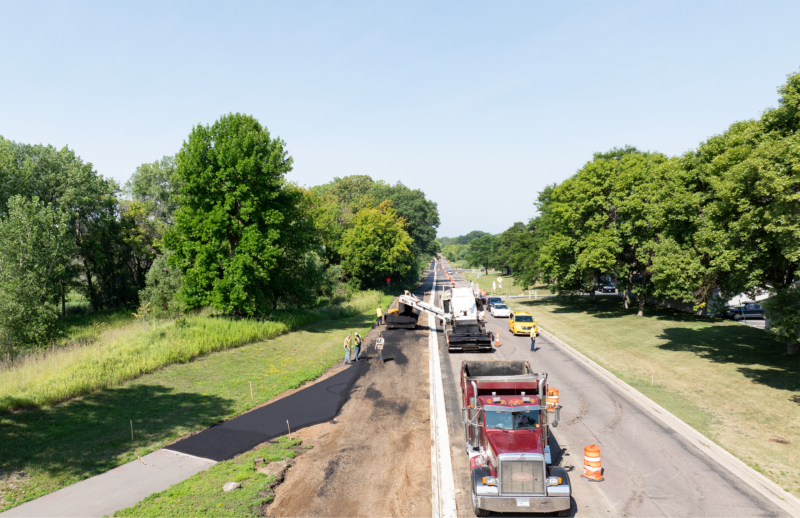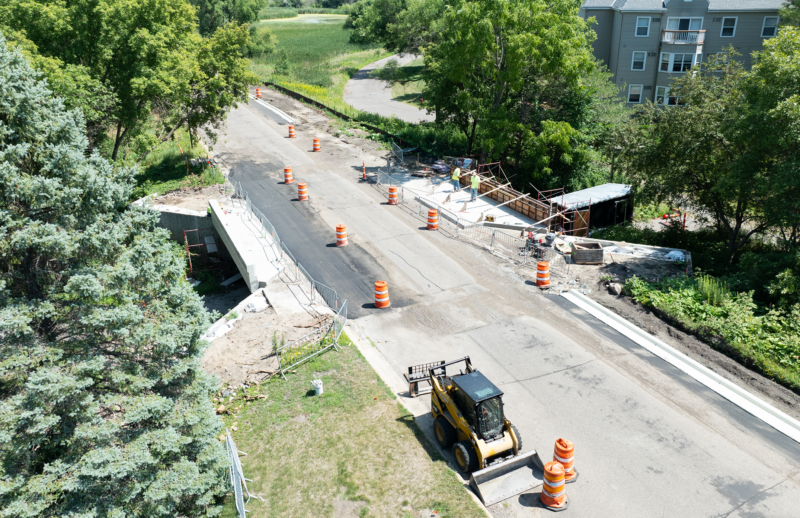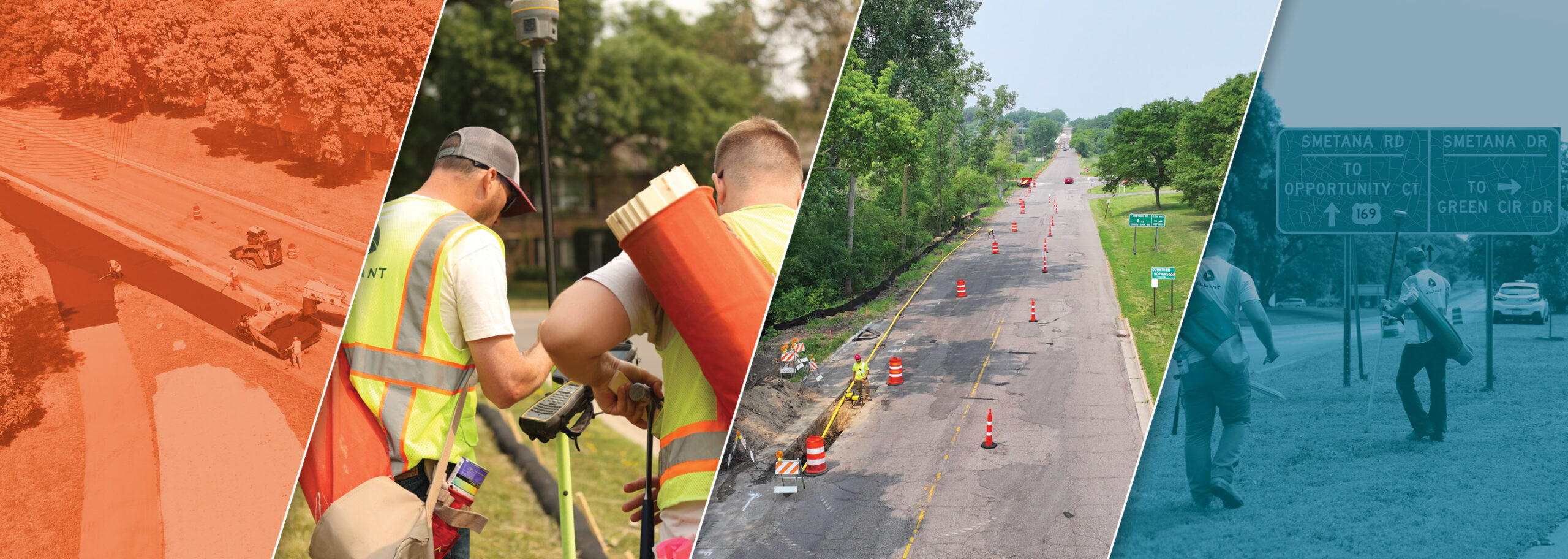Infrastructure is the framework of a community.
For a community to function efficiently, the roads, trails, and utilities must be designed with safety at the forefront. This benefits residents while having a limited impact on the surrounding environment.
In this episode of Screen to Streets Alliant’s Katie Becker and Eric Plemel share their experience redesigning a one-mile stretch of Smetana Road on the border of the Cities of Hopkins and Minnetonka including a shared-use trail.
Paving the way
This project is important for numerous reasons, with resident safety high on the list. The two-lane roadway is in a densely populated area and had no continuous sidewalks or trails to walk, roll, or bike on. These conditions made pedestrians feel unsafe while using non-motorized transportation modes and unintentionally restricted access to a larger trail network in the area.
The project scope consists of:
- Preliminary feasibility study
- Public engagement support
- Final roadway and trail design
- Topographic survey and construction staking
- Wetland delineation and permitting
- Water resources design and permitting
- Construction support
The design came with challenges. Space constraints with adjacent land use and the need to protect the wetlands were two of the biggest. However, that did not deter the team, “My favorite part of the Smetana Road Trail project was coming up with creative solutions to fit within the existing limitations,” said Katie.
Developing an intricate roadway model was key to the project’s success. The team was sure to maintain space for vehicles while creating space for the shared-use trail and providing modifications to the existing drainage network. The redesign incorporates ADA compliance on the trails, ensuring everyone has access to the ecological treasures in the area.
“What feels like a small project really transforms how we interact with our neighbors,” said Eric.
What’s Next?
When asked about the future of infrastructure, Eric expressed a desire to connect more people, whether that be through bike lanes, trails, or sidewalks. “We live in a highly developed part of our world, yet there are many reasons why people who live in one neighborhood are not able to access something that someone in the next neighborhood can.” he added, “We can help connect people.”
Katie focused more on green and smart infrastructure, and how excited she is to be a part of the industry’s move to be more sustainable. “It’s both our responsibility and goal to build better communities for the future,” said Katie.

Roadway profile and geometry carefully avoided floodplain impacts.

Structural modifications to existing pedestrian tunnel created room for a trail and provides improved aesthetics with ornamental bridge railings.
For more information on this project contact Eric Nelson, enelson@alliant-inc.com.

